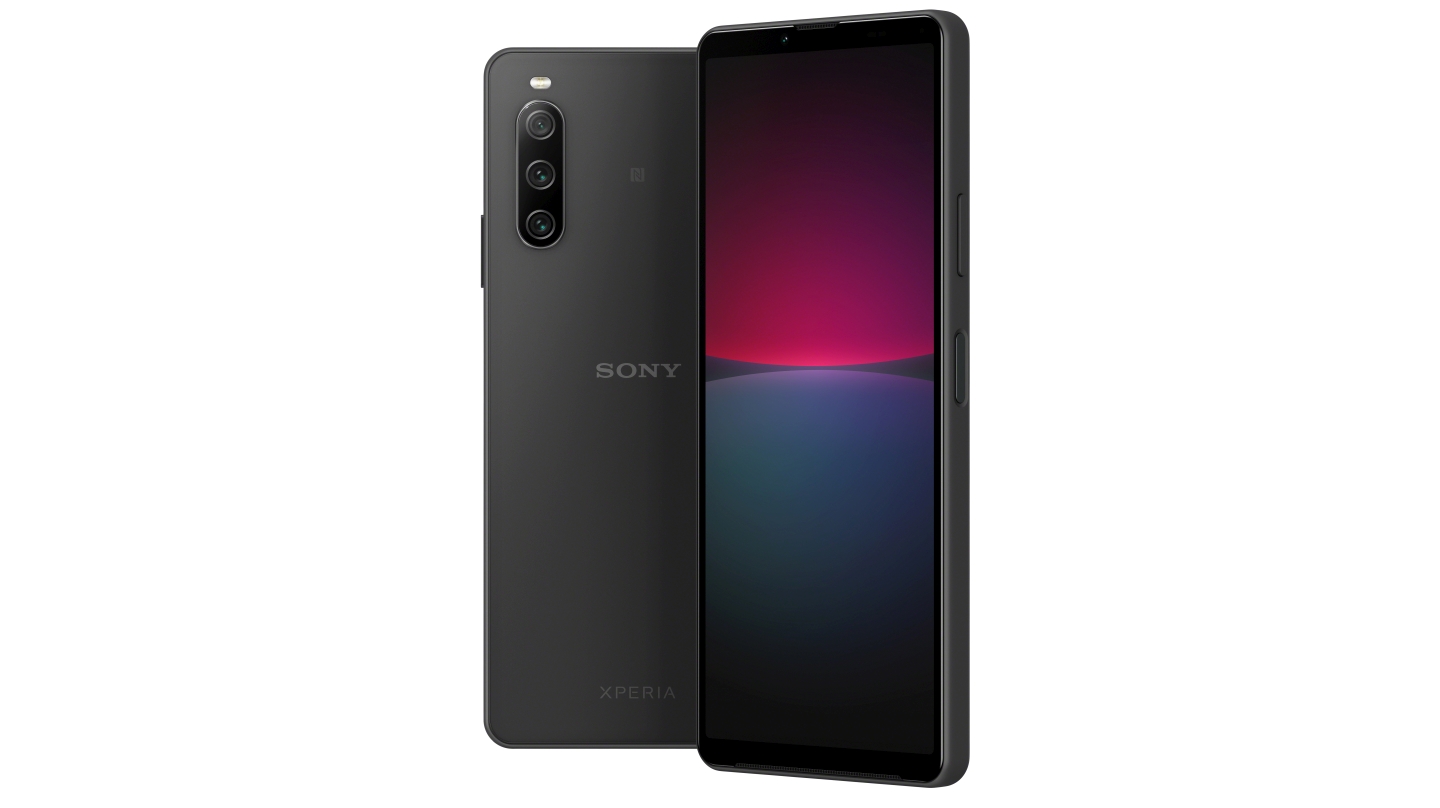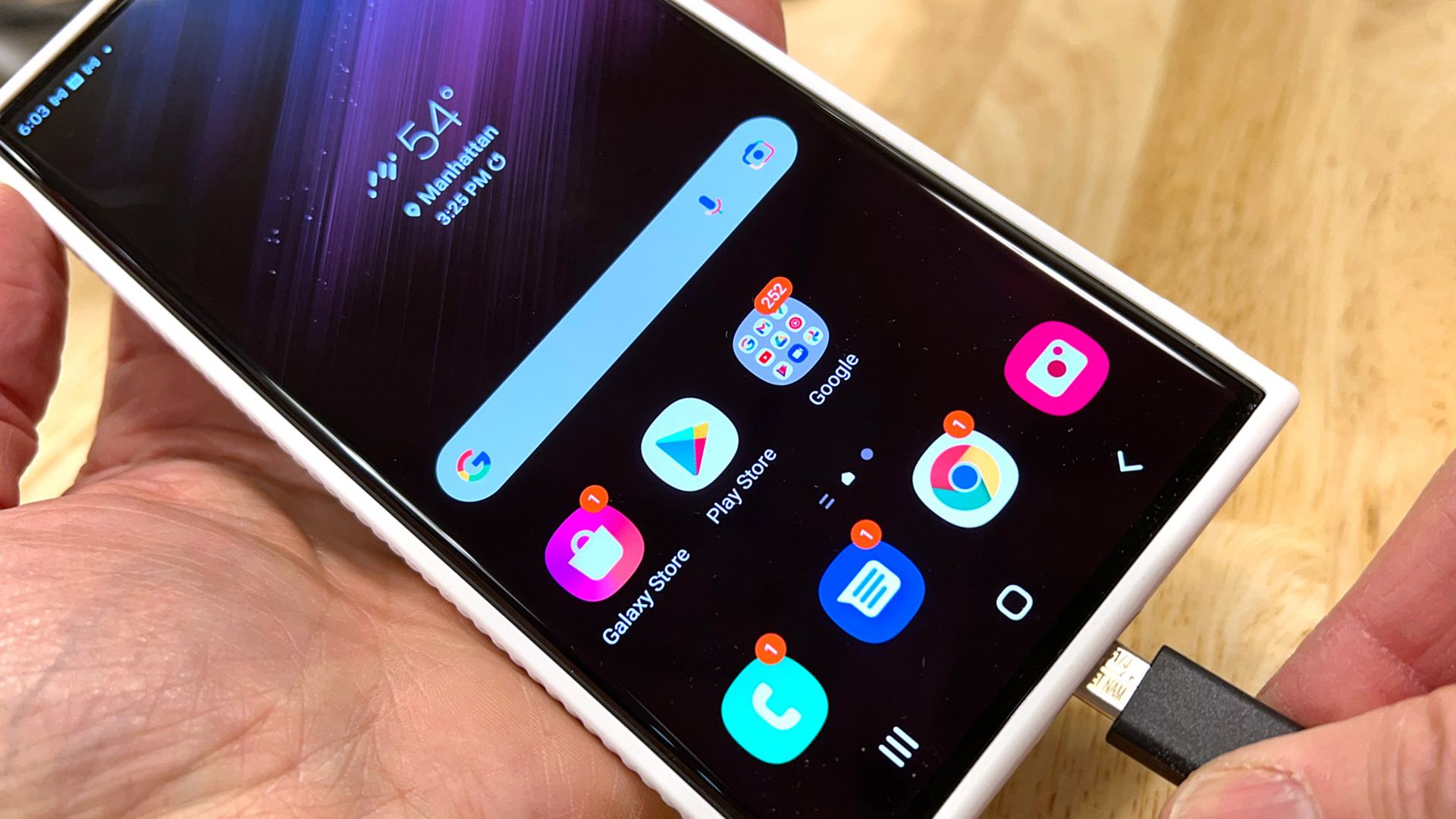
Sony has announced the Sony Xperia 1 IV, its major flagship smartphone hope of 2022.
We’ve always admired the Xperia 1 range as the technically impressive, resolutely niche devices that they invariably are. But Sony’s phones have never approached the mainstream appeal of the Samsung Galaxy S range.
So how is the Sony Xperia 1 IV likely to fare against Samsung’s latest flagship, the Samsung Galaxy S22 Ultra? Let’s take a closer look at the facts and figures and see if Sony has a fighting chance against the world's best smartphone.
Sony Xperia 1 IV vs Samsung Galaxy S22 Ultra: price and availability
The Sony Xperia 1 IV will hit shops on June 16 in the UK and Europe, and September 1 in the US. In the US there’s a single 512GB model that will retail for $1,599, while the UK and Europe get a single 256GB model priced at £1,299 / €1,399.
We’re not expecting the Xperia 1 IV to launch in Australia, based on the company’s previous release patterns.
The Samsung Galaxy S22 Ultra went on sale on February 25, 2022. Prices start at $1,199.99 / £1,149 / AU$1,849 for the 8GB RAM/128GB model, moving up to $1,299.99 / £1,249 / AU$1,999 for 12GB/256GB and $1,399.99 / £1,329 / AU$2,149 for 12GB/512GB, and topping out at $1,599.99 / £1,499 / AU$2,449 for the 12GB/1TB top dog.
In terms of choice of specs and price points, the Samsung clearly wins.
Sign up for breaking news, reviews, opinion, top tech deals, and more.

Sony Xperia 1 IV vs Samsung Galaxy S22 Ultra: design
The Sony Xperia 1 IV sports the brand’s signature boxy aesthetic, with dead-flat surfaces and a matte finish to the glass rear. Sony always makes its flagship phones taller/longer than most of the competition, and the Sony Xperia 1 IV follows suit with a 165 x 71 x 8.2mm body. It’s relatively light at 185g too.
That unusual height comes down to two things: a 21:9 aspect ratio for the display (more on which later), and larger-than-average top and bottom bezels. The latter is down to Sony’s insistence on keeping the selfie camera away from the display for an uninterrupted picture.
You can always find interesting details around the rim of a Sony flagship, and here there’s the brand’s signature two-stage camera shutter button on the right edge, so on the top of the phone when it’s held in landscape orientation, while on the top there’s a 3.5mm headphone jack. The message is clear: this is a phone for the cinema purists, photographers, and audiophiles out there.
The Sony Xperia 1 IV is available in black, white, or purple, which is a much smaller range of colors than the Samsung Galaxy S22 Ultra, which gives you Phantom Black, Phantom White, Sky Blue, burgundy, green, graphite and red options.

Indeed, the Samsung does everything bigger, with a body size of 163 x 77.9 x 8.9mm and a weight of 229g. Samsung’s design language is much more in-your-face than Sony’s too, with gently curved side edges contrasting with a perfectly flat top and bottom. We called the Samsung “an inarguably beautiful device” in our review, but its OTT style isn’t for everyone.
Both Samsung and Sony have resisted the temptation to slap on an ostentatious camera module, with Sony going with a single lozenge-shaped array while Samsung separates out each lens. On the front, Samsung has gone with a punch-hole punch cut-out, while Sony, as mentioned, puts the selfie camera in the top bezel.
As for water and dust resistance, the Sony Xperia 1 IV gets the more thorough IP68/IP65 certification, while the Samsung Galaxy S22 Ultra has just the standard IP68. They’re both water- and dust-proof, but Sony has gone the extra mile to prove it.
Sony Xperia 1 IV vs Samsung Galaxy S22 Ultra: display
Both of these phones excel in the display stakes, but for different reasons.
For the Sony Xperia 1 IV, it’s all about the OLED display’s combination of an unusually sharp 4K (3840 x 1644) resolution, a wide 21:9 aspect ratio, and the complete lack of a notch. Together, this makes this phone the best suited to viewing 4K video content – especially now that Sony has upped the maximum brightness by 50% compared to the slightly dim Xperia 1 III.
With Samsung, the specs are a little more traditional, but no less impressive for it. This AMOLED display is bigger and brighter than the Sony at 6.8 inches and a maximum 1,750 nits respectively.

It’s not as sharp at 3200 x 1440 (QHD+), but you could hardly call it lacking on this front.
You also get a more traditional 19.3:9 aspect ratio, which makes it better suited to non-landscape content – that is, almost everything except for videos and some games.
Both AMOLED displays feature LTPO panel technology, so both can scale their refresh rates between 1Hz and 120Hz according to the task. That’s good news for energy efficiency.
All in all, Samsung’s screen is probably the best on the market, but Sony is coming with a unique offering for cinephiles.
Sony Xperia 1 IV vs Samsung Galaxy S22 Ultra: camera
The Sony Xperia 1 IV features a triple 12MP camera system, which doesn’t sound half as impressive as the Samsung Galaxy S22 Ultra’s 108MP wide, 12MP ultra-wide and twin 10MP telephoto combo.
However, that would be to misunderstand what both manufacturers are shooting for here, if you’ll excuse the pun.
Sony has always taken the approach of prioritizing shooting speed, class-leading autofocus, and good old-fashioned sensor size over megapixel counts and image processing. The Xperia 1 IV’s main image sensor captures 1.8µm pixels compared to the S22 Ultra’s 0.8µm, though the latter uses pixel binning (combining multiple pixels into one larger pixel) to compensate.

Sony goes for more hands-on control, as evidenced by that physical shutter button. You also get a more in-depth pro-level camera app that resembles the interface in the company’s Alpha line of cameras.
Samsung’s camera UI isn’t short of pro-level controls if you want them, but it’s more geared as a point and shoot camera – and it’s exceptional in this respect, with new Adaptive Pixel technology bolstering image quality.
Virtually every image we shot with the phone during our test period looked great, albeit with Samsung’s signature oversaturated palette. Sony has traditionally favored a much more muted, natural look for photos.

The biggest clash this time around could be in the zoom stakes. The Samsung Galaxy S22 Ultra offers without question the best telephoto zoom performance on the market, with a 10MP 3x lens and a separate 10MP 10x lens combining/working in tandem to capture phenomenally sharp zoomed shots.
This year, however, Sony could have an answer to Samsung in the shape of the world’s first continuous optical zoom system in a smartphone. You can move from 70mm to 125mm (roughly 3.5x to 5.2x) with no jumps or digital trickery in between.
On the video front, the Xperia 1 IV can now capture 4K video at up to 120fps, while the S22 Ultra can manage 8K at 24fps or 4K at up to 60fps.
On the selfie camera front, Sony has gone with a 12MP one, while Samsung has used a more pixel-dense 40MP example.
Sony Xperia 1 IV vs Samsung Galaxy S22 Ultra: specs and performance
The Sony Xperia 1 IV is powered by the Snapdragon 8 Gen 1 processor, as is the Samsung Galaxy S22 Ultra in the US and most other territories; in the UK and Europe, however, you’re getting Samsung’s own Exynos 2200 chip.
While the Exynos is a perfectly capable processor, it’s not quite as capable as the Snapdragon, as proven by benchmark tests.
You likely won’t notice the difference in general use, of course, with both phones handling multi-tasking and 3D gaming fairly effortlessly during our testing. But together with the Sony Xperia 1 IV’s standard 12GB of RAM (the Samsung starts at 8GB), it’s enough to make us lean towards Sony here, particularly if you’re in the UK.

When it comes to storage, Sony gives you 256GB in the UK and Europe, or 512GB if you’re in the US, while Samsung gives all its customers a much broader range of options of 128GB, 256GB, 512GB or 1TB.
While the Sony is all about the unique features, Samsung has one notable ace up its sleeve: the S Pen. Samsung has brought this over from its now-defunct Note range, offering an advanced stylus that slots into the body of the phone.
This won’t be for everyone, but if you like to physically scrawl notes or make sketches, it’s the best system of its kind on a phone.
Opinions vary on the relative software offerings, but Sony’s UI is traditionally lighter and closer to stock Android than Samsung’s. Conversely, Samsung tends to go further with customization potential and power features.
Sony Xperia 1 IV vs Samsung Galaxy S22 Ultra: battery
Both of these phones come equipped with 5,000mAh batteries, which is pretty standard (albeit far from uniform) for modern flagship Android phones.
We’ll have to wait and see how that translates into battery endurance for the Sony, though that 4K panel will inevitably drink the juice.
We do know that the Samsung Galaxy S22 Ultra’s battery life was somewhat underwhelming in our tests, with the phone barely making it through a full day of varied activity.
Neither phone is particularly impressive when it comes to charging speeds. Sony supports 30W wired charging support, while Samsung goes to 45W.
Given that some rivals are now hitting 80, 100, or 120W, we remain unmoved, especially given that neither manufacturer gives you a charging brick in the box – given the price being asked for both phones, that’s a bit of a shocker.

Sony Xperia 1 IV vs Samsung Galaxy S22 Ultra: takeaway
Sony looks to have brought some subtle but potentially meaningful improvements to its latest flagship, particularly with its increased battery capacity and souped-up camera zoom.
The Samsung Galaxy S22 Ultra is, however, widely regarded as the best Android phone on the market. It’s got the same-sized battery as the Xperia 1 IV, and is known for its phenomenal zoom capabilities. Can Sony really hope to top it?
It’s arguable that Sony isn’t particularly focused on doing so, as strange as it may sound. Its devices are niche affairs aimed at photographers, videographers, and audiophiles, and the Xperia 1 IV looks set to offer even broader appeal to creative types.
We’ll know more come June 16 when the Sony Xperia 1 IV joins the Samsung Galaxy S22 Ultra on the market. Stay tuned for our full review of Sony’s new flagship.
- Take a look at all the best Samsung phones

Jon is a freelance journalist who has been covering tech since the dawn of the smartphone era. Besides TechRadar, his words and pictures have appeared in The Telegraph, ShortList, Tech Advisor, Trusted Reviews, Expert Reviews, and more. He largely covers consumer technology, with a particular focus on smartphones and tablets. However, he's also been known to dabble in the worlds of entertainment and video games.